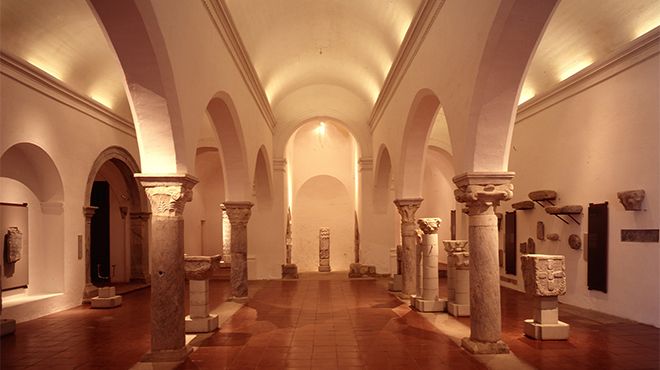Igreja de Santo Amaro / Núcleo Visigótico do Museu Regional

Igreja de Santo Amaro / Núcleo Visigótico do Museu Regional
Monuments
The original Church of Santo Amaro (Saint Amaro) dates back to the end of the 5th century, the time when the Visigoths were settling the region. It is a fine example of Paleo-Christian architecture in Portugal and the main reason for it becoming home to the Beja Regional Museum's Visigoth exhibition.
This valuable collection was put together by various archaeologists of whom Abel Viana arguably takes the highest profile. The museum includes pieces from the 5th to the 8th century and highlights the changes in architecture and taste that took place during the transition from Roman to Visigoth domination.
The basilica underwent various changes in the 16th and 17th centuries, hence the interesting gothic and Mannerist features it now displays.
Through to the 14th century, Saint Amaro day, 15th January, was popularly celebrated with cakes and sweet dishes in the shape of arms and legs in a call for the saint's protection from diseases in these limbs.
This valuable collection was put together by various archaeologists of whom Abel Viana arguably takes the highest profile. The museum includes pieces from the 5th to the 8th century and highlights the changes in architecture and taste that took place during the transition from Roman to Visigoth domination.
The basilica underwent various changes in the 16th and 17th centuries, hence the interesting gothic and Mannerist features it now displays.
Through to the 14th century, Saint Amaro day, 15th January, was popularly celebrated with cakes and sweet dishes in the shape of arms and legs in a call for the saint's protection from diseases in these limbs.
Contacts
Address:
Largo de Santo Amaro 7800 Beja




 Explore
Explore 
 Remember and Share
Remember and Share 


